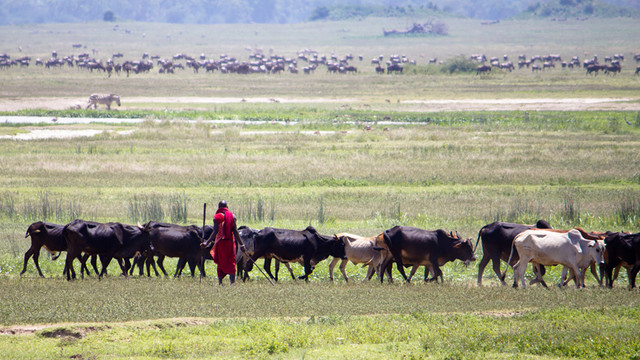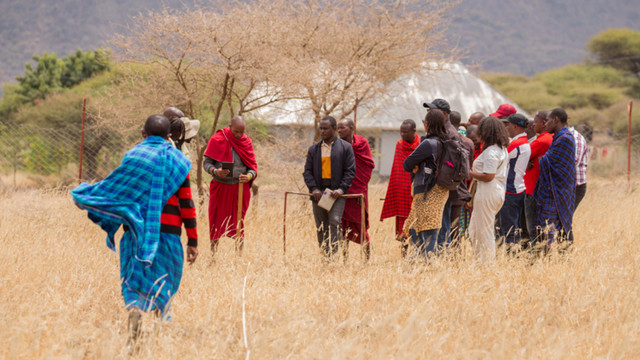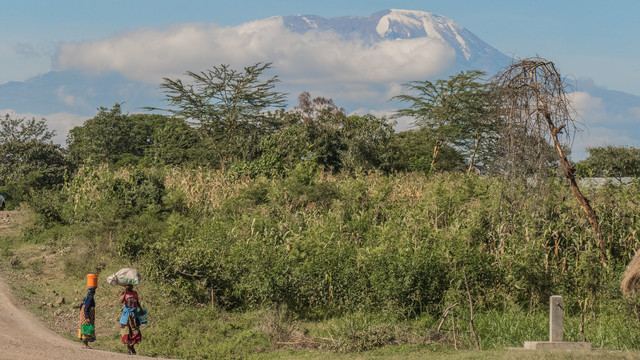Building a vision of climate resilience: questions to the adaptation community
Guest blogger Gebru Jember Endalew sets out key questions for the adaptation community to be tackled at this year’s community-based adaptation event (CBA13) taking place in Addis Ababa.


Drip irrigation in Faylar village, Senegal. Investing in solar-powered water pumps and drip-feed irrigation systems can help farmers survive in times of drought (Photo: InnoAfrica, CC BY-SA 4.0)
Having worked for decades as a meteorologist in Addis Ababa, I have been close witness to the pressures that climate change has brought to Ethiopia, and how these pressures have worsened over time. Droughts have become more frequent and severe. Seasonal rainfall is erratic.
From the highlands to the lowlands, the people of my country have seen crops fail, livestock die off, rivers dry up, infrastructure destroyed. Lives have been lost.
Ethiopia, as one of the Least Developed Countries (LDCs), is highly vulnerable to climate change. Yet the LDCs are working hard to build resilience to the climate shocks and stresses that threaten the lives and livelihoods of our one billion people.
LIFE-AR: taking the long view
Science tells us that, into the future, these threats will deepen: hotter heatwaves, drier droughts, heavier floods. New risks will emerge. Thresholds will be reached. The LDCs’ capacity to cope with climate impacts will be pushed to tipping point.
Over the years, many of the LDCs have tried to address the impacts of climate change on a sector-by-sector and project-by-project basis. But building sustainable climate resilience requires working across multiple sectors, and engaging a wider range of stakeholders including government, private sector and communities. We urgently need a new approach – a shift from this short-term thinking to long-term planning, financing and implementation. We need a durable strategy that will bring lasting change.
The Paris Agreement commits signatories to support vulnerable communities as they seek to adapt and become more resilient. In response, the LDC Group - during Ethiopia’s chairmanship – launched the LDC Initiative for Effective Adaptation and Resilience (LIFE-AR).
This LDC-led initiative seeks to develop effective longer-term climate adaptation interventions, and in so doing, strengthen the case for domestic, donor and private investment that can be steered toward LDCs priorities. It’s great to see the government of Bhutan, having taken the reins as chair of the LDC Group, so committed to driving forward LIFE-AR.
Shining a light on what works
Part of the initiative will include building up a rich evidence base of long-term climate adaptation interventions that work – what we are calling ‘lighthouse initiatives’.
Just one year into LIFE-AR, we have already made strong headway, having gathered more than 90 examples that showcase approaches to building resilience at scale.
These include:
- Integrating climate resilience and disaster response into social protection systems in India, Ethiopia, Uganda, Kenya, Fiji, Philippines and Peru (among others)
- Nature-based solutions implemented across different ecosystems and landscapes – for example, integrated river basin management in Uganda, coastal mangrove restoration in the Pacific and ecosystem-based adaptation in South Africa, and
- Climate resilient value chains in agriculture, forestry, energy and livestock that promote SME development and create links between households, governments and the private sector.
But more learning is required – such as investing in climate resilient infrastructure that can drive economic growth in the LDCs over the coming decades; delivering basic services including healthcare, education and access to water in a changing climate; promoting climate-resilient development in rapidly expanding urban areas; and supporting migration with dignity and security for those who will increasingly need to relocate as a result of climate hazards.
Through LIFE-AR, LDCs will develop an over-arching vision towards a climate resilient future by 2050. In the more immediate term, it will help define countries’ climate targets set out in National Adaptation Plans (NAPs), Nationally Determined Contributions (NDCs) and wider national efforts to build resilience.
The initiative will show the rest of the world that a new way of working is both feasible and beneficial. And it continues LDCs’ commitment to lead from the front on climate action, spearheading sustainable, climate-centric development that will build long-term resilience and help break cycles of poverty.
Learning-led: building the evidence base at CBA13
But long-term adaptation does not come easy. The future in the changing climate is plagued with uncertainty – we cannot say when the impacts will hit, nor where, nor how severe they will be.
Long-term adaptation will require an iterative, learning-by-doing approach. Under LIFE-AR, LDCs will seek to learn rapidly from interventions that are working, and that can be replicated and scaled up.
The 13th community-based adaptation event (CBA13), this year taking place in Addis Ababa, presents an opportunity to further enrich LIFE-AR’s evidence base. The CBA13 programme is built around generating local adaptation solutions for long-term climate resilience. It is a valuable opportunity to hear first-hand from adaptation practitioners, researchers, grassroots representatives, national policymakers and local government planners about lived experience of adaptation interventions that work.
Key questions
CBA events have a strong track record for creating hubs of lively and informed debate geared toward generating actionable solutions from the ground. We will seize CBA13 as a moment when key actors from the adaptation community gather, and ask them the following questions:
- What are the most effective and significant adaptation interventions in your country?
- How have they led to significant/far-reaching change?
- What key mechanisms helped deliver the outcome?
- How did you measure effectiveness?
- What interventions would work together and why?
- How can interventions be scaled-up to deliver long-term resilience?
- How can government systems be used to finance and deliver resilience interventions at different scales?
- How can interventions foster greater collaboration across different sectors and actors?
These questions will help us drill down further into the challenges and opportunities for achieving long term adaptation and resilience. We look forward to hearing insights from your projects and programmes, to sharing evidence of works, and testing new ideas for adaptation solutions that support the most vulnerable. Join us at CBA13!


